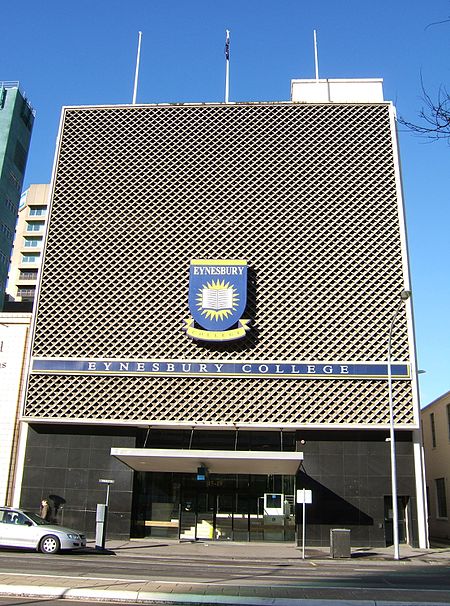Eynesbury Senior College

Eynesbury Senior College is an independent co-educational senior high school on Franklin Street in the city centre of Adelaide, the capital of South Australia. The college comprises a modern, five-storey, multi-function complex and caters for Year 10, 11 and 12 students. Due to the impact the Coronavirus pandemic has had on the intake of international students, Eynesbury Senior College will be stopping operation at the end of the 2021 academic year.The college is characterised by its adult learning environment and its different approach to senior secondary education. Noticeably absent are extra-curricular activities, extensive sporting programs, festivals and other activities which are a feature of traditional schools. As a result, teachers are available outside scheduled class times for extensive one-to-one support. Students are encouraged to see their teachers as colleagues and are free to address them by their first name. Eynesbury is known for its record of consistent academic success. The median Australian Tertiary Admission Rank of its students has been around 87-90 each year with about 95% going on to undertake tertiary studies.
Excerpt from the Wikipedia article Eynesbury Senior College (License: CC BY-SA 3.0, Authors, Images).Eynesbury Senior College
Trades Hall Lane, Adelaide Adelaide
Geographical coordinates (GPS) Address Nearby Places Show on map
Geographical coordinates (GPS)
| Latitude | Longitude |
|---|---|
| N -34.9275 ° | E 138.59833333333 ° |
Address
Trades Hall Lane 14-16
5000 Adelaide, Adelaide
South Australia, Australia
Open on Google Maps








